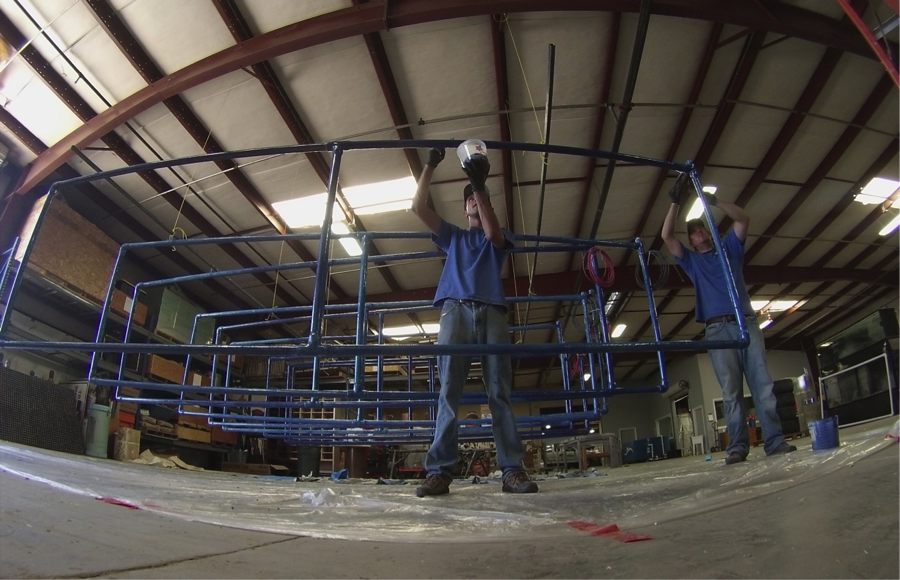


FISHBIO designed and fabricated a PIT tag antenna array for the Nature Conservancy to answer questions about steelhead (Oncorhynchus mykiss) movement and behavior in the Salinas River basin on the central California coast. The Salinas River is a dynamic and sometimes challenging environment to study, due to its shifting, sandy riverbed and the “flashy” flows that can suddenly swell the system after a big rain event. Steelhead (Oncorhynchus mykiss) living in the river exhibit a variety of life history strategies that can vary from year to year, and typically fall into one of three categories: 1) anadromous sea-run, or fish that migrate to the ocean; 2) anadromous estuary-run, or fish that migrate to the river estuary/lagoon; and 3) resident fish, which remain in-stream. Since steelhead are capable of making multiple migrations, individuals will likely exhibit multiple behaviors along the spectrum between these life history categories over the course of their lives.
FISHBIO has monitored adult and juvenile steelhead migration in the Salinas Basin for the Monterey County Water Resources Agency since 2010 using a weir and rotary screw traps. Many questions exist regarding the origins and fates of the fish entering and leaving the basin: whether the adults have originated from the ocean or the river estuary, or have strayed from other coastal streams; whether juveniles migrate to the estuary or remain in fresh water, and what levels of predation befall the fish in the basin. Implanting and tracking fish with PIT tags can help answer these questions, and a working group from the Nature Conservancy provided funds to construct a PIT Tag antenna array system for the Salinas River.
To develop a design plan for the PIT Tag antenna array, FISHBIO collected data during a reconnaissance survey of the chosen installation site, conducted an extensive literature review, and consulted with PIT tag manufacturer Oregon RFID. The installation location is relatively complex, which required advanced planning and a high level of technical skill in antenna design and fabrication. FISHBIO first fabricated a preliminary model array and tested it in the field to determine the detection efficiency threshold for the design. This preliminary array was crucial in providing additional information for site-specific operation, ultimately leading to a better design to maximize detection efficiency while covering the width of the lower Salinas River near the estuary.
The final array design included eight rectangular half-duplex antennas measuring 15 ft. wide by 4 ft. tall. The antennas are configured side-by-side and can be staggered to provide easy boat passage without sacrificing detection area, and can also withstand heavy flows. The wire for the antennas was embedded in polyvinyl chloride (PVC) tube frames and held in place by expanding foam. These frames were subsequently wrapped in fiberglass and painted to camouflage the structure underwater. Measures were also taken to overcome the effects of salinity on the operation of the array. The next step of the project will be to install and antenna array in the field.